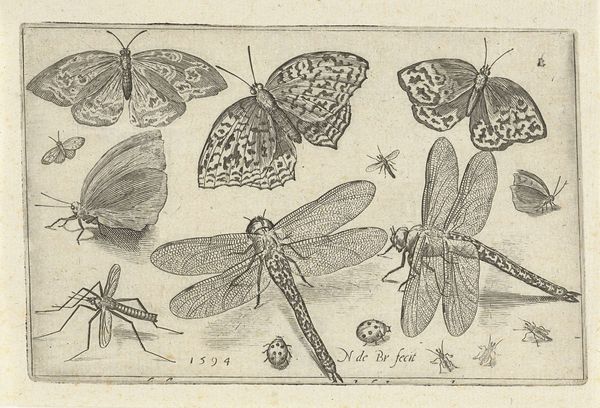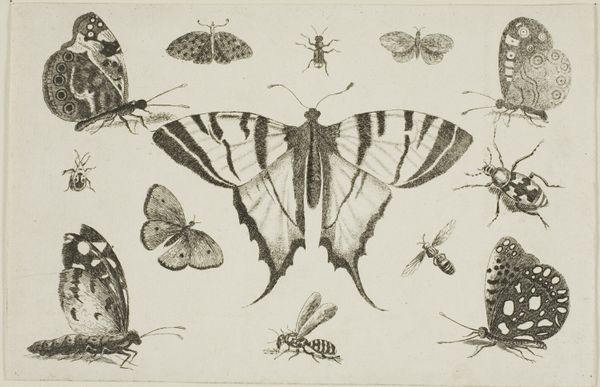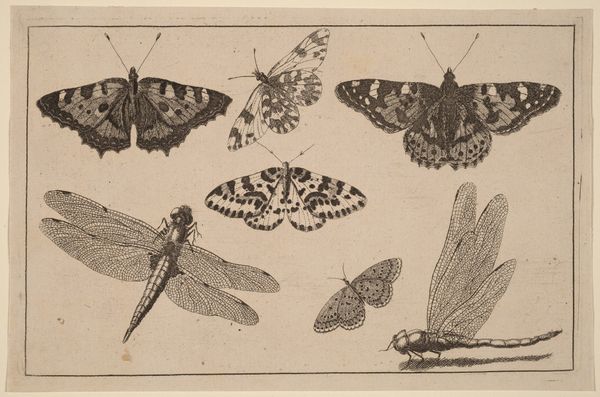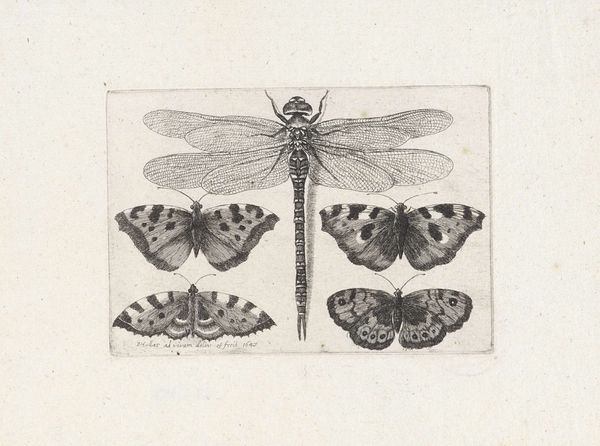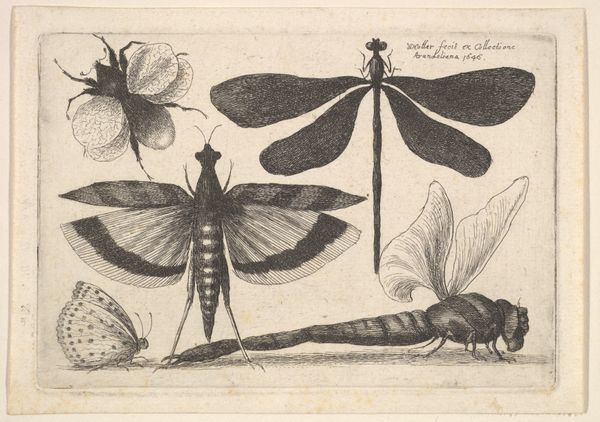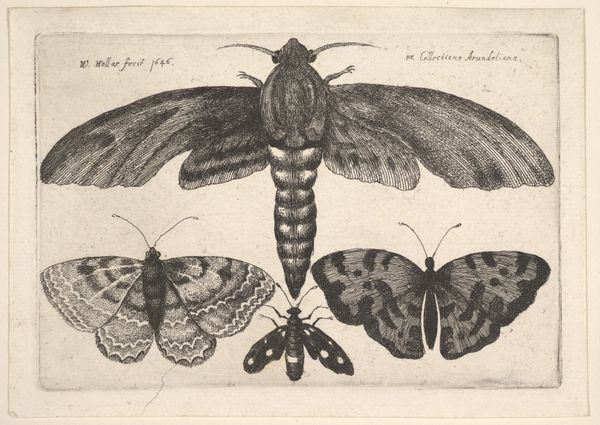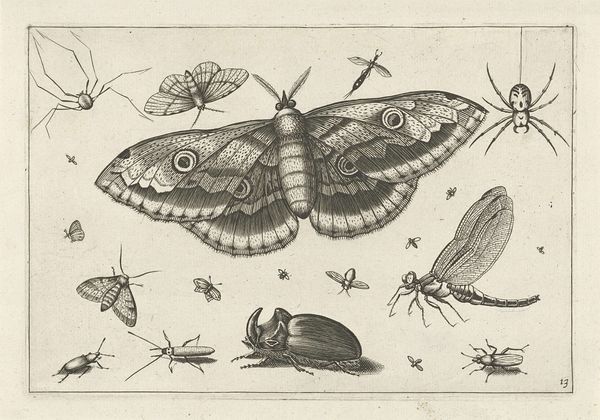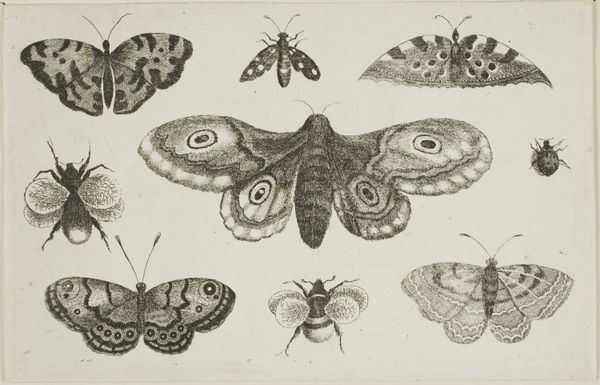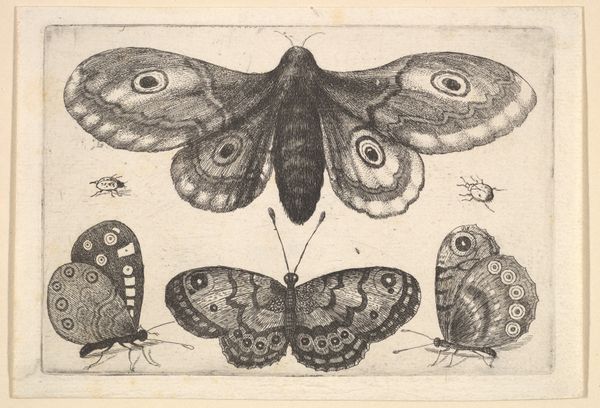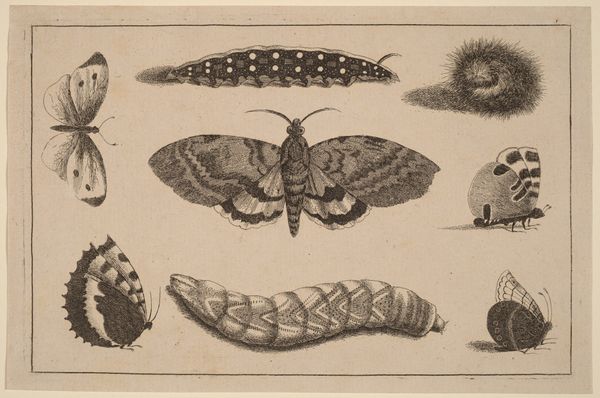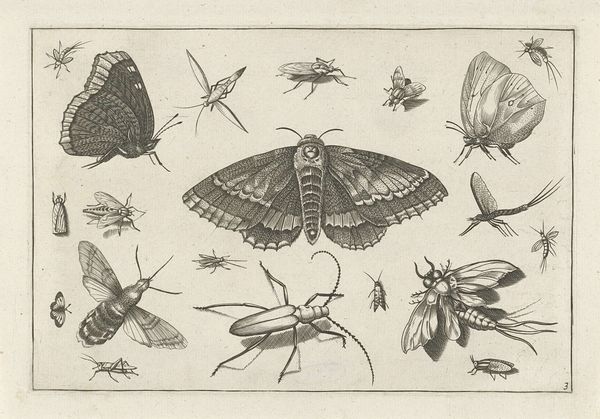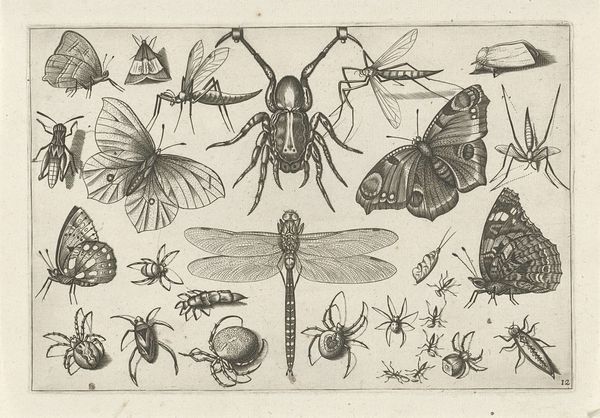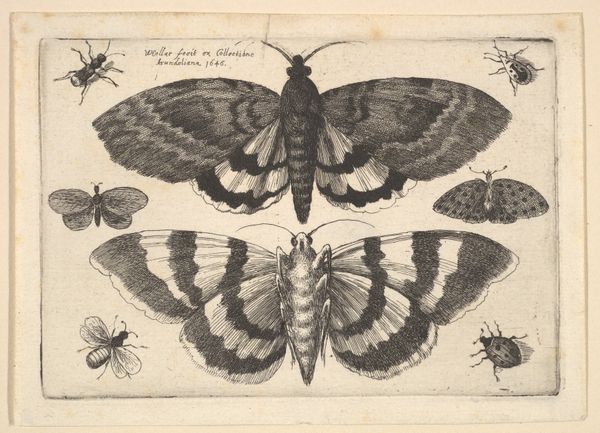
drawing, print, etching, paper, engraving
#
drawing
#
pen drawing
# print
#
etching
#
paper
#
history-painting
#
engraving
Dimensions: 111 × 206 mm (sheet, trimmed within platemark)
Copyright: Public Domain
Curator: The initial feeling is airy. There's an elegance in the distribution of shapes, all these insects seem ready to take flight despite being permanently etched onto the page. Editor: We’re looking at “A Dragonfly, Ladybirds, and Butterflies,” a piece created after 1646 by Wenceslaus Hollar. It’s an etching printed on paper. Curator: Ah, etching makes sense! The fineness of the lines is striking. You can really see it in the details of the dragonfly’s wings, almost like miniature landscapes. The stark monochrome aesthetic adds to this feeling, there's almost no variation in tone across the surface of the piece. Editor: Absolutely. Consider how printmaking enabled the widespread circulation of images like this, accessible to a broader audience than unique paintings. Hollar’s commercial motivations undoubtedly shaped his choices—subjects that would appeal and production methods that allowed for repetition. Think about the labor involved: the metal plates, the ink, the press… it's a whole economy materialized! Curator: It really makes you appreciate the sheer skill and practice behind this style. All the bodies, meticulously rendered using different patterns. And while scientific illustration often implies objectivity, I feel a delicate emotional resonance too. These aren't simply insects, there is life and an aesthetic sense imbued by their specific presentation, in their poses, which evokes something quite personal. Editor: Precisely. These weren't simple documents for a naturalist. They speak to broader cultural interests too. What role might images of the natural world play in demonstrating early understandings of emerging global trade? Etchings such as these speak to the growth of markets that helped produce them. Curator: This changes the tone, in that it encourages us to reconsider who this was for, and what purposes they served for them. Fascinating! Editor: Exactly. The very material choices of paper and etching speak to specific social contexts and methods of disseminating this type of aesthetic into an active marketplace. Curator: Indeed. This quick fly-by gave us so much to consider about its purpose. Editor: Right! It is amazing what opens up when looking through the lens of materiality and broader societal implications.
Comments
No comments
Be the first to comment and join the conversation on the ultimate creative platform.
